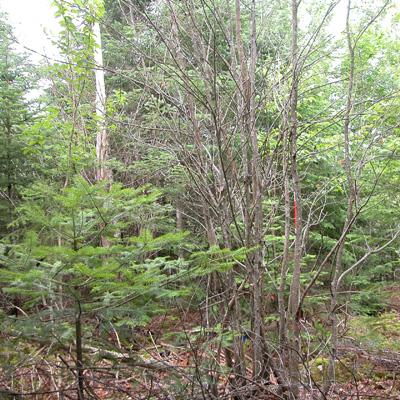Rehabilitation of Cutover Mixedwood Stands: A Silvicultural and Economic Assessment of Alternatives

Mixed-species, conifer-dominated stands are common in northern New England and neighboring Canada. Repeated heavy partial cutting with selective removal of the largest trees and most valuable species has caused shifts in tree species composition and deterioration of residual growing stock. In Maine, U.S. Forest Service Forest Inventory and Analysis data show that the volume of spruce decreased by 49% from 1982 to 2003, while red maple increased greatly in abundance. The area of spruce-fir forest decreased, and average annual removals of spruce and fir exceed net growth. Millions of acres of cutover land present management challenges to today's forestry practitioners.
NSRC researchers investigated precommercial rehabilitation of mixedwood stands degraded by repeated commercial clearcutting in a long-term experiment on the Penobscot Experimental Forest in Maine. Researchers applied three rehabilitation options in 2008-2009 (20 years after the last harvest): no rehabilitation; moderate rehabilitation (crop tree release); and intensive rehabilitation (crop tree release, removal of unacceptable growing stock and non-commercial species, and planting of red spruce). Crop trees were mostly red maple and paper birch, though spruce species, eastern hemlock, and pine species were also favored.
Rehabilitation was labor intensive (23 and 52 hours/acre to apply the moderate and intensive treatments, respectively). Both treatments slightly reduced overstory stocking and greatly reduced understory stocking. Proportion of hardwoods did not change in the overstory, but decreased in the understory. A 2010 inventory of planted spruce revealed 83% survival, though more than half had been browsed. These findings provide a cautionary message for those considering short-term gains through exploitative partial cutting in the region.
Download printable version [PDF]
Download full final report [PDF]
